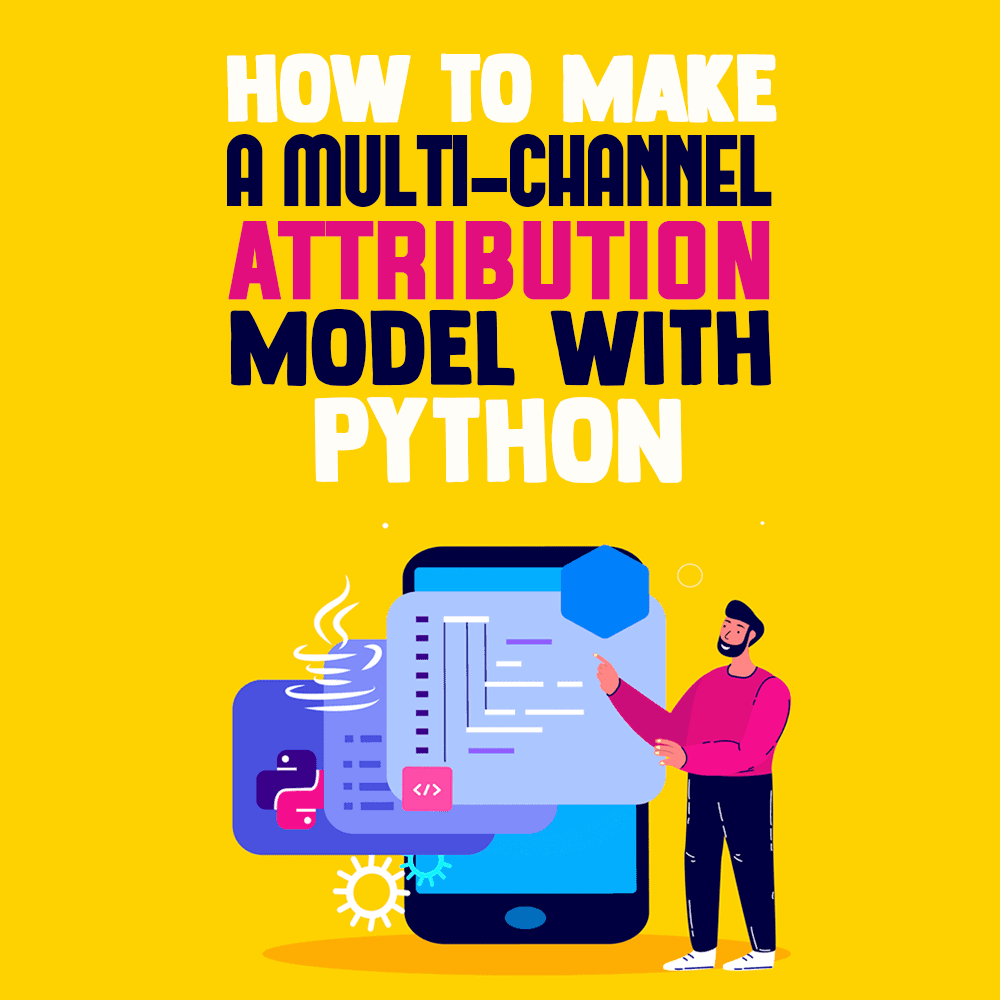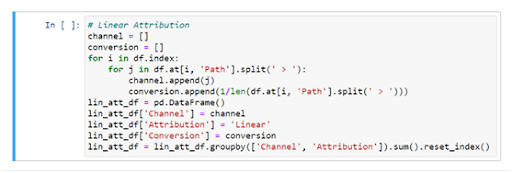 Shopping patterns have changed drastically in recent years. Nowadays, informed customers do research before investing in any item and make online purchases only after going through multiple channels and websites to get the best deals for themselves. However, this makes it difficult for marketers to correctly determine how much of each marketing channel the customer was exposed to before making a conscious choice.
Shopping patterns have changed drastically in recent years. Nowadays, informed customers do research before investing in any item and make online purchases only after going through multiple channels and websites to get the best deals for themselves. However, this makes it difficult for marketers to correctly determine how much of each marketing channel the customer was exposed to before making a conscious choice.
If we determine the channel paths that the customer goes through before purchasing their favorite product, we can analyze which channel has assisted them in making a purchase, using the channel attribution model. Such a multi-channel report would provide us with two important conversion values: last click conversion and assisted conversion.
In this post, I will show you how to use Python to build a multi-channel attribution model that could then be applied to retrieve the valuable information I referred to above. This would greatly help with marketing strategies for any business or even individual seller.
Traditional E-Commerce Attribution Models
Before I show you how you can build your attribution model based on Python, it would be productive to first take a quick look at some of the traditional e-commerce attribution models.
Since the customer has become more research-oriented and prefers to explore all channels before indulging in a product, market agencies use marketing attribution models to track the channels that influenced the customer to purchase in the first place:
- The First Touch Attribution Model – The first channel is given 100% credit, as it is considered the first marketing channel responsible for the customer’s purchasing decision.
- The Last Touch Attribution Model – The last channel or the last touchpoint is given 100% credit in this model, as it is considered that the last marketing channel touched was responsible for the customer’s choice of purchase.
- Linear-Touch Attribution Model – All the marketing channels present in the customer journey are given equal credit in this attribution model. Each channel is considered to influence the customer’s choice of purchase equally.
- U-Shaped or Bathtub Attribution Model – This model assigns 40% to the first and to the last channel, and 20% is distributed equally among the remaining channels. This channel is most common in e-commerce companies.
Obviously, each model can give different insights into customer behavior. The specifics depend to some extent on the business involved, but that’s precisely where a multi-channel attribution model can be valuable, as it allows us to understand what’s most suitable in a given context.
And now that we have taken a brief look at the various models, it’s time to see how we can build our own multi-channel attribution model.
Python Code To Build Multi-Channel Attribution Model
Let us take the following dataset. In columns, we have engagement activities, and we have the channels in a row that are engaged with. This dataset maintains a chronological order. We have assigned each marketing channel a fixed numerical value and have displayed them in such a way that in the x column, the x’s engagement has been fetched from a user with a respective marketing channel.
We have converted the data in channel 21. Hence, the dataset contains the journey of user conversion.
Let us take the first step by importing the necessary libraries. Here, you have to import Pandas library for data manipulation, Seaborn for data analysis, Matplotlib for data visualization, and subprocess for creating new processes.
The next step is to load the dataset, which you can accomplish using the pd.read_csv() function. Now, you need to get the column list using df.columns. Having done that, you can iterate through columns for changing all integers to strings. After that, the data points have to be cleaned up.
Here, you need to use the Markov chain framework; hence, you need to take the user journeys in one variable. You need to consider it as the form of First Channel > Second Channel > Third Channel and so on. The next piece of code will perform this activity.
In the dataset, channel number 21 is the conversion event. Thus, we need to detach this channel from the original path. After that, you have to create another conversion variable that will hold the number of successful conversions. The following block of code will accomplish this.
Congrats, you have completed the data manipulation process!
Now, you have to grab the subset of columns that you need to forward for the next step, as your dataset still has the original ones. You also need to group your user data here, as many users can take the same journey.
Your conversion variable will contain the conversion number for every customer journey, respectively. Moreover, we need to create another CSV file to store the path data. You can use this CSV file to run the attribution approach.
Now, you have two options. The first one is to install the channel attribution module using pip. To install this module, just go to your terminal, and write the following:
pip install --upgrade setuptools
pip install Cython
pip install ChannelAttribution
The second option is to create Markov networks/ chains in Python on your own. Nonetheless, it would be faster to integrate your Python code with the ‘ChannelAttribution’ library in the R programming language. This library contains all the executable components of channel attribution. You can use the Python library subprocess to accomplish this.
If you want to calculate the first touch attribution, the following block of code will help you.
Similar to the first touch, you can also calculate the last touch attribution. The following block of code will accomplish that.
In addition, if you need to calculate the linear attribution, you can run the following piece of code.
Now, you can build a multi-channel attribution model using the Python programming language by following the step-by-step procedure. Try it and see the results.
Challenges To Implementing a Data-Driven Attribution Model
Leading marketers are relying on a data-driven attribution model, as it can effectively determine the impact of touchpoints on a customer’s journey. Brands can now fetch the data they need and analyze it, as that helps them to improve their marketing strategies based on customer insights.
However, you may face various challenges while implementing a data-driven attribution model. These include:
- The dilemma between taking action or getting insights can be the fundamental challenge that you will face. You will always want to add a new data point that will give you more insights. It can cause slow improvement and up-gradation.
- There are various attribution models available. So you need to choose from various options. Most of the time, a specific attribution model leads to optimized results. Hence, finding the perfect model is challenging and needs more research.
- You will find various tools to implement. But you need to select the perfect combination. Your team must be knowledgeable to overcome this challenge.
- You need to integrate both offline and online touchpoints to get proper customer insights. Hence, you may face many challenges such as accurately record customer insights, identify unique keys for each touchpoint, impact issues, etc.
Each situation demands a unique solution to the problem. It will require patience to analyze the problem to come up with the optimal solution. Each company might have different requirements, and there needs to be excellent coordination and synchronization among your team members to cater to specific needs.
Not giving up at any point in time will lead you to your final goals. Coming up with smaller improvements will someday lead you to great success, so keep up the zeal, and face every challenge with a positive mindset and an optimistic viewpoint.
Knowledge Is Power
In this post, I showed you how to make multi-channel attribution models using Python. As you saw, there are various e-commerce attribution models in use, each one with its own characteristics.
Moreover, using data-driven attribution models involves certain challenges, from the dilemma between taking actions or getting insights, to the various choices you will have to make.
Still, knowledge is power: Understanding the customer journey arms you with the resources to take appropriate action. Hopefully, this post provides the best possible outcome for your knowledge and serves your purposes well.









